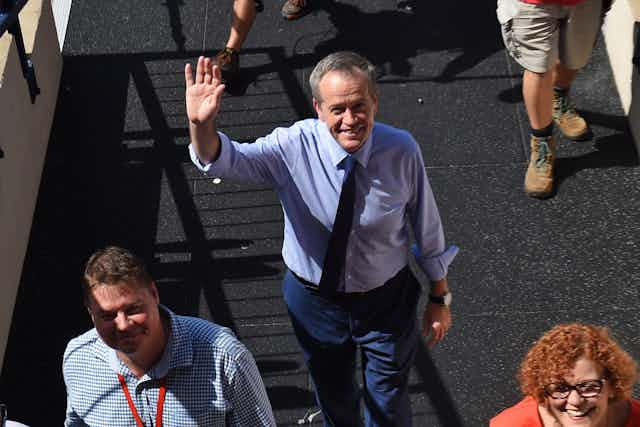The election is still nearly two months away, making prediction precarious. However, there are some certainties. And these help explain the thermonuclear war that has broken out between Labor and the Greens over the possibility that the Liberals might preference the Greens in some marginal seats.
Such a deal would have serious implications for Labor. And it would present a real opportunity for the Coalition to lock in its chances of securing majority government.
Numbers and preferences
The Greens in 2010 seized the inner-city seat of Melbourne from Labor. At this election, the Greens are targeting Grayndler and Sydney in New South Wales, Batman and Wills in Victoria, and possibly Fremantle in Western Australia, too.
The more seats Labor has to defend the fewer resources it has to the gain the 21 seats it needs for a majority. But this is not the only reason the Coalition would countenance what many of its supporters would regard as a deal with the devil.
The Greens’ only lower house MP, Adam Bandt, has spoken of the possibility of a Labor-Greens coalition in government. It’s a prediction Labor Leader Bill Shorten dismissed, telling the Greens they were “dreaming”.

Shorten has spent the last two-and-a-half years trying to shed memories of the dysfunction of the Rudd-Gillard years. Talk of a Labor-Green coalition brings with it images of Julia Gillard and Bob Brown signing the agreement that helped usher in her minority government.
The government needs to push Labor to the left in the minds of voters. Any suggestion of a deal with the Greens helps construct such a trap. It is this collision of political reality and metaphor that is toxic for Labor.
Labor cannot win the 21 seats needed for a majority in the House of Representatives unless it lifts its primary vote above the mid-30s where it has been, at best, in the opinion polls for months.
With a Labor primary vote of 33% – even 38% – there are simply not enough preferences on offer from the Greens, minor parties and independents when it probably needs at least 51% of the two-party-preferred vote to win enough seats to form government on its own.
On the other hand, Prime Minister Malcolm Turnbull cannot afford to see Coalition support keep sliding towards a primary vote of 40%. And, worryingly for the Coalition, Turnbull’s popularity keeps falling despite the benefits of incumbency. As it stands, he would retain office courtesy only of the comfortable majority bestowed on the Coalition at the 2013 election under Tony Abbott’s leadership.
That would not be much of a personal mandate and would make it even harder for Turnbull to fend off the rebellion on his right. This is already constraining his room to move on climate change and a range of social issues, most notably same-sex marriage.
Time is Turnbull’s enemy and Shorten’s friend. An election campaign is the one time in the political cycle when an opposition leader is afforded anything like the same stature as a prime minister. However, Shorten needs an opportunity to break the chains shackling Labor’s vote at Gillard-esque levels.
The possibility of a hung parliament
Another hung parliament is a real possibility unless Turnbull or Shorten can fashion a breakout from this stalemate. This would raise the question of whether hung parliaments could be the “new normal”, in an era where fewer voters are rusted onto the major parties, rather than an aberration brought on by Labor’s dysfunction in 2010 and beyond.
Forming minority government could prove harder than it did in 2010. Independents will be even more wary of committing one way or the other given the vilification of Tony Windsor and Rob Oakeshott for tying themselves to Gillard.
It could again come down to the negotiating skills of the two major party leaders.

Liberal Democrat senator David Leyonhjelm says that while he did not agree with Labor on much, its leaders proved much more adept negotiators than members of the Turnbull or Abbott governments. Negotiation is in the DNA of Labor politics. Shorten’s union history, where coming to terms with employers on behalf of unionists is the essential skill, may give him a natural advantage.
By contrast, winner-take-all is the goal of courtroom advocacy and corporate deal-making. This is a characteristic Turnbull does not seem to have left behind in his transition from merchant banker and barrister to political leader.
Politics requires leaders to know when to impose their authority, when to compromise, and just how much to give to the losers when, in the future, you may need their support.
If hung parliaments are the way of the future, then their legacy may well be teaching governments to negotiate with the crossbenchers rather than treating them as temporary irritants.
It may well be an assessment on many voters’ minds as they contemplate how they will vote – as well as crucial for Turnbull and Shorten to consider as they vie to run the country.

